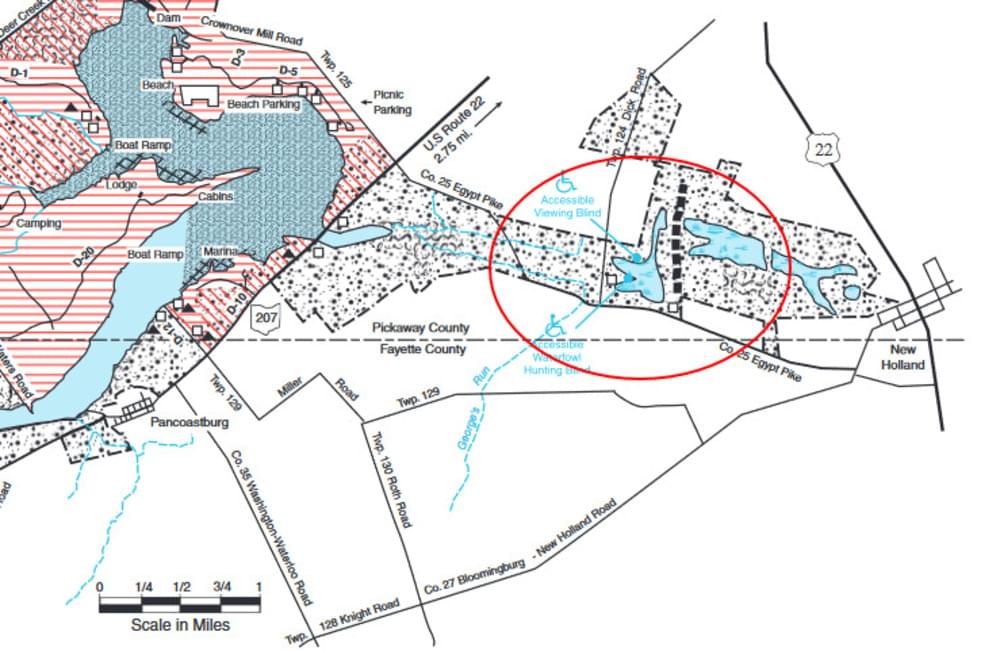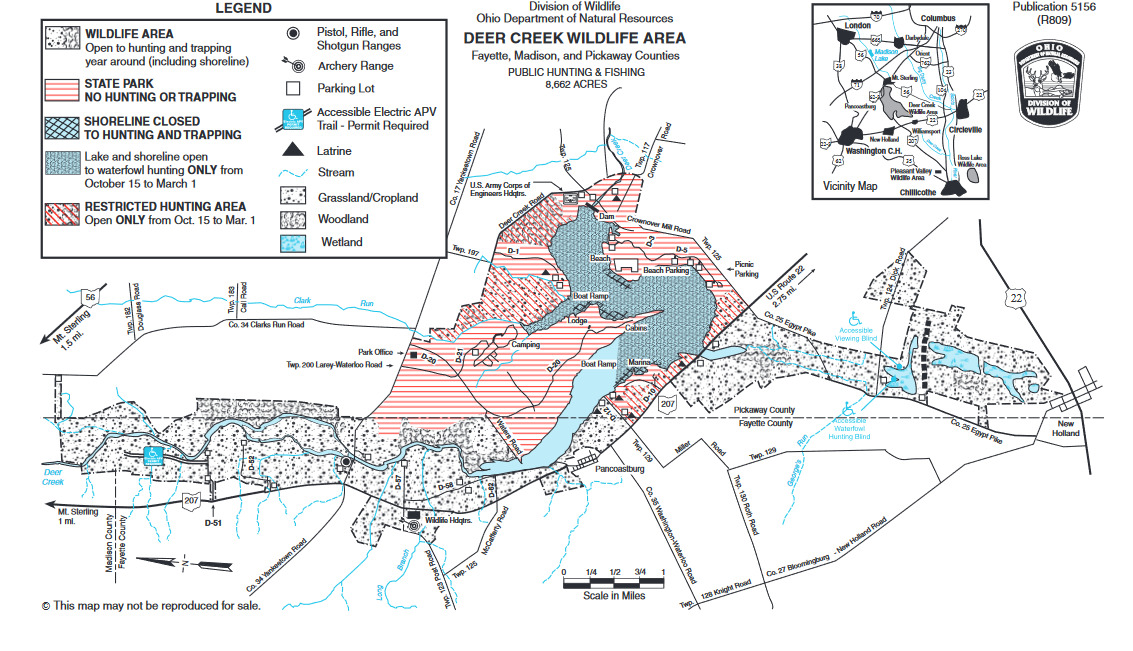Deer Creek Wildlife Area--Middle Wetland
Deer Creek Wildlife Area--Middle Wetland
Mount Sterling, Ohio 43143
Deer Creek Wildlife Area Official WebsiteDeer Creek Wildlife Area map
Deer Creek Lake webpage
Deer Creek State Park website
Also, see all the hotspots at:
Pickaway County Birding Drive
About this Location
The middle and southern wetland tract are best explored by parking a bit further south along Egypt Pike Road. The parking area is not marked on the wildlife area map, but it is where the short right of way into the area from Egypt Pike Road is shown. This is south of the large dike and north of the intersection with County Road 27. Park at the designated parking area and walk eastward to the wetlands. Driving through here isn’t allowed to the public. The woodlot and brush to get to the wetlands offer excellent birding year round for passerines. The farm field south of the path is often flooded in the spring and filled with shorebirds such as Solitary, Pectoral, and Least Sandpipers, and Wilson’s Snipes. The path itself is often flooded over too in the spring and boots are often necessary. You’ll want to wear them anyway in the wetlands if you want to explore. The middle wetland tract is a large shallow pond that is especially attractive to puddle ducks in the spring and large numbers can be present. Red-necked Grebe, Tundra Swan, Greater White-fronted Goose, Snow Goose, Ross’s Goose, and Eurasian Wigeon have all been seen here in the spring. In the fall shorebirds will utilize the edges and any islands that may appear. Before the reservoir is drawn down this is the best place to look for shorebirds in the Deer Creek area in August through early October, although some years are better than others. 2013 was especially good with 14 shorebird species present in late September and again in late October with a large flock of Dunlins. In 2014 the pond dried up earlier than usual, but Buff-breasted Sandpipers made an appearance after some goon rains in September. Northern Harriers can be found all year long. Bald Eagles can be present most of the year and nest nearby as do Ospreys. Rough-legged Hawks and Short-eared Owls often patrol the area in winter.
About Deer Creek Wildlife Area
See all hotspots at Deer Creek Wildlife Area
The 4,220-acre wildlife area is in central Ohio, four miles south of Mount Sterling on OH-207 and adjacent to the 1,277-acre Deer Creek Lake. It can be reached from the east and west by US-22 and OH-56, and from the north and south by US-62 and OH-3, OH-104, and OH-207.
The topography is flat to slightly rolling. The soils are mostly well drained and of medium to high productivity. Approximately 1,000 acres of row crops and small grains are under cultivation annually. Controlled burning and native warm season grass plantings have also been introduced as part of the wildlife management program.
About 25 percent of the wildlife area consists of second growth hardwoods and brush in advanced stages of succession. The timber stand is mainly on the east side of Deer Creek It includes oak, hickory, elm, black walnut, ash, maple, locust, sycamore, and cottonwood. Index of Ohio’s trees from the Division of Forestry. The uncropped remainder of the area is in permanent meadow, reverting fields, wildlife food plots, and prairie grasses.
Deer Creek Lake construction began in 1965 by the U.S. Army Corps of Engineers for flood control and was completed in 1968. Of the 7,575 acres, 6,875 are leased to the Ohio Department of Natural Resources for fish, wildlife, and general recreation purposes. Deer Creek State Park lies to the south and east of the lake and provides camping, picnicking, and boat launching facilities for the hunter and angler. Public hunting is permitted on some of the undeveloped 3,165 acres controlled by the Division of Parks and Recreation, and on all property controlled by the Division of Wildlife.
Wildlife management plans provide for the maintenance and protection of existing woodlands, establishment of field sizes and crop rotations beneficial to wildlife, improvement of open fields for wildlife nesting, and the establishment of annual food patches for general wildlife use. Permanent wildlife cover has been provided through the planting of native prairie grasses such as switchgrass, big blue stem, and Indiangrass.
Restrooms at Deer Creek State Park.
There is a handicapped accessible bird viewing blind at the Dick Road Wetland.
Content from Deer Creek Wildlife Area Official Website, Robert Royse’s Bird Photography Pages, and Ohio Ornithological Society

